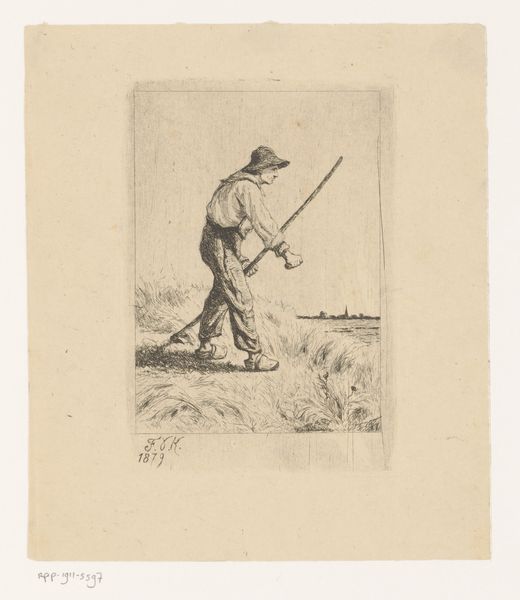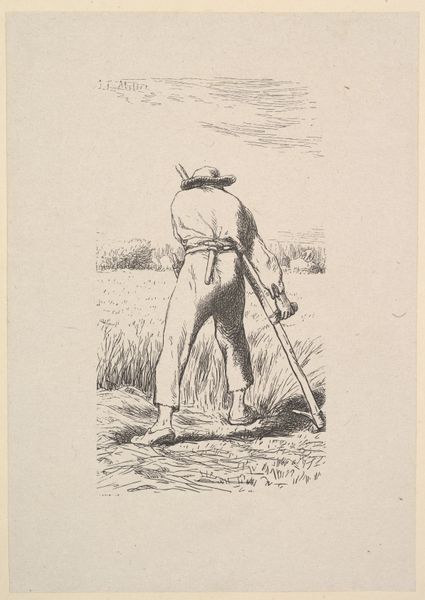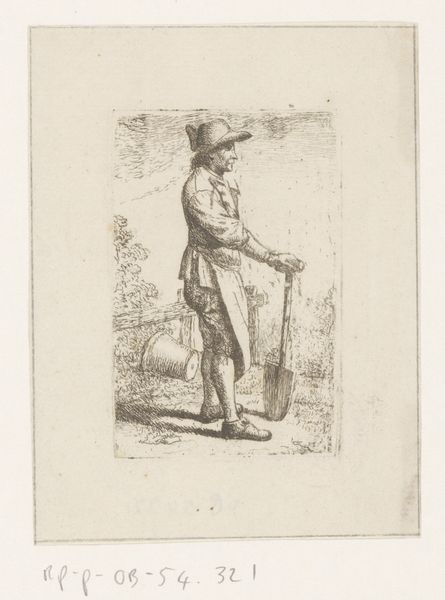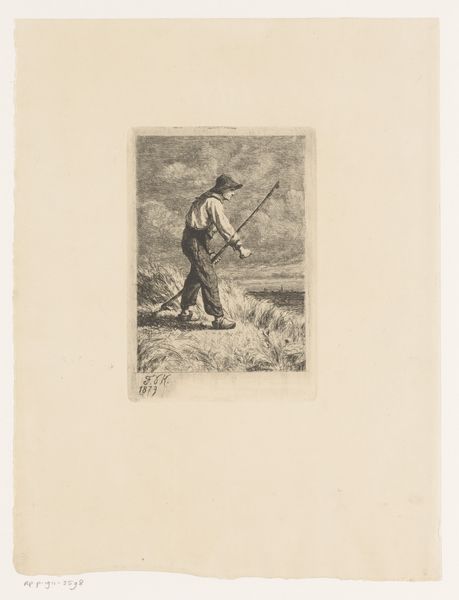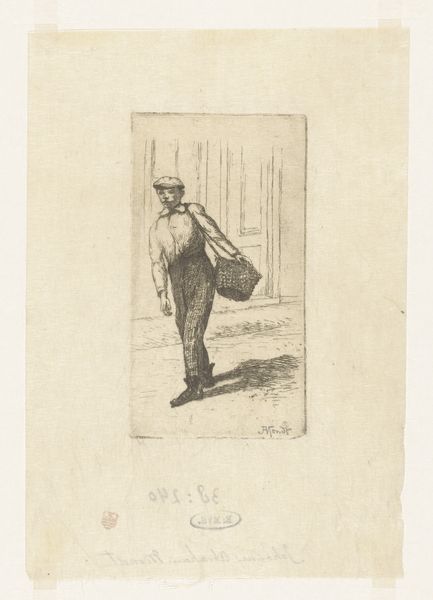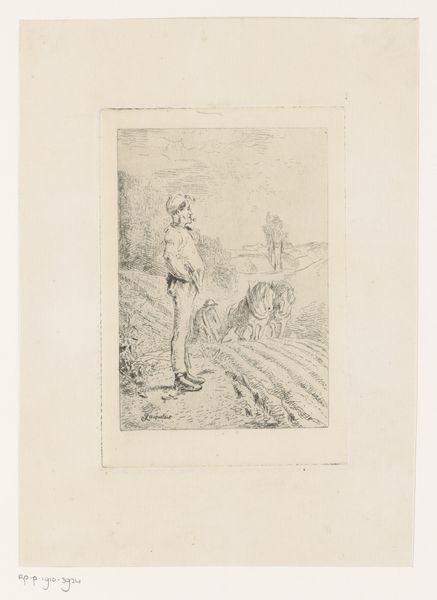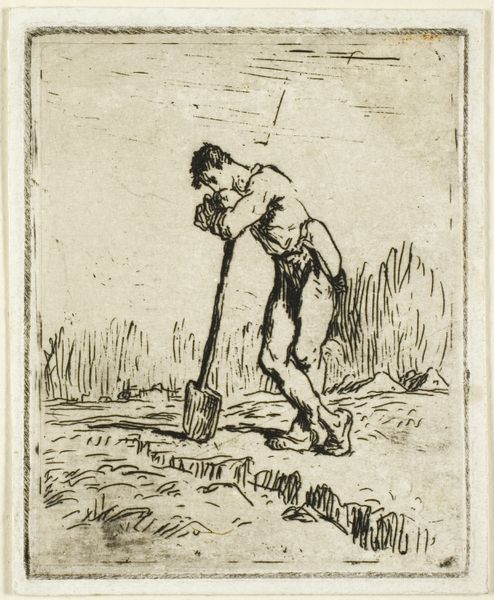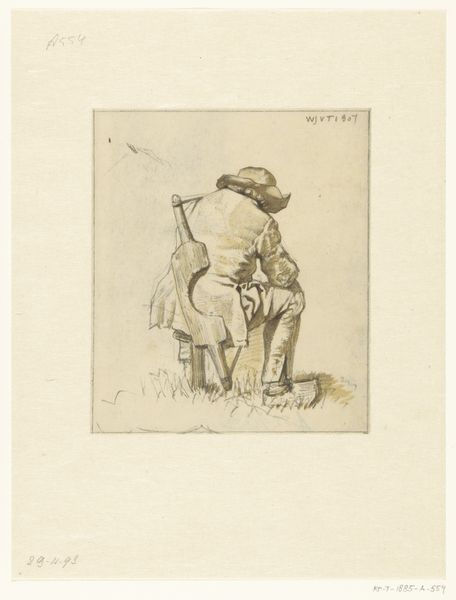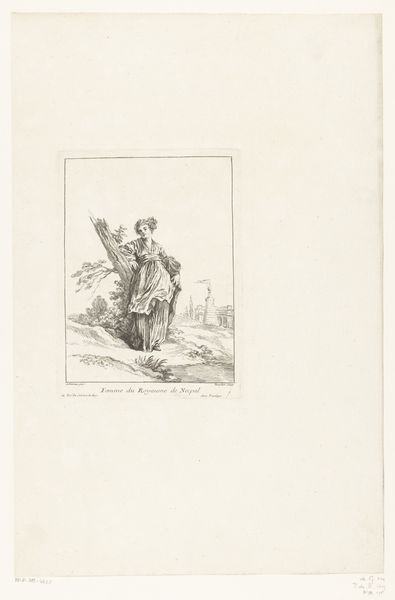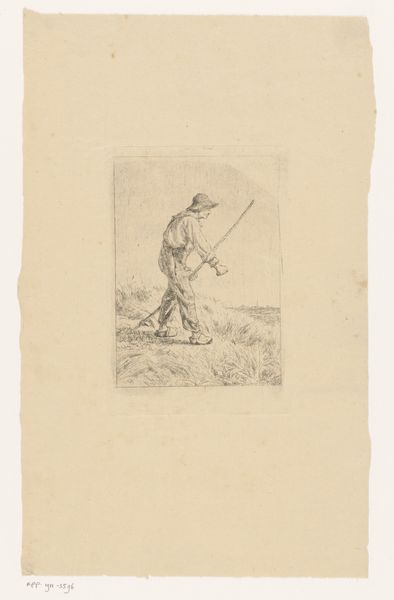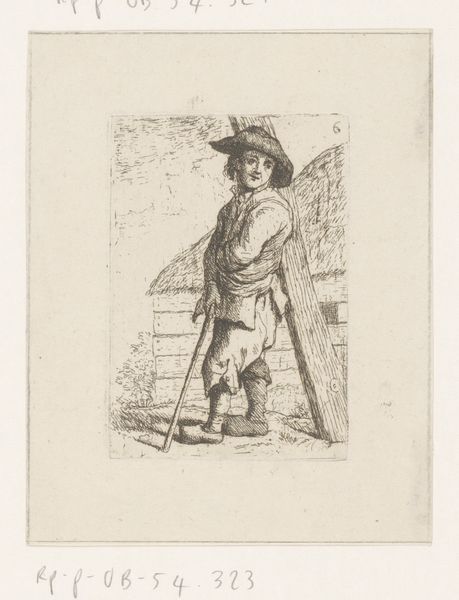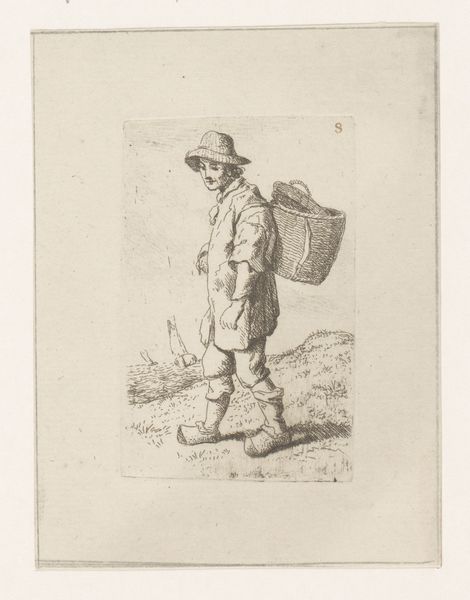
drawing, print, etching
#
portrait
#
drawing
# print
#
etching
#
landscape
#
folk-art
#
genre-painting
#
realism
Dimensions: height 142 mm, width 94 mm
Copyright: Rijks Museum: Open Domain
Curator: Here we have Jean Théodore Joseph Linnig’s etching, "Man Leaning Against a Wooden Fence," created around 1885. It’s a genre scene rendered with striking detail. Editor: It's mostly tones of light grey, very atmospheric. The figure has his back to us. The hat is a little floppy, adding a bit of visual levity against the otherwise somber mood of the image. Curator: I agree. I find the use of etching particularly relevant. This process, using acid to corrode lines into a metal plate, would have been a labor-intensive method accessible to artists of varied economic means, reflecting Linnig’s social observations of the period. Editor: Right. And look at the etching technique here: See the visible cross-hatching used to create depth, specifically in the figure's clothing, adding a certain density to the materiality and presence of the figure that contradicts the almost hazy landscape behind. Curator: Precisely. One might see the wooden fence as a symbolic class division, but even more specifically it functions as part of the industrial-agricultural context for many 19th-century rural dwellers in Europe. The division of land, and of labor… Editor: …while it certainly represents societal structure, the fence offers him support, physically and perhaps symbolically, inviting a momentary pause for contemplation. The subtle windmills and village buildings in the background pull our view far past the fence line creating a multi-layered spatial composition. Curator: Yes, that perspective is carefully rendered. But to consider its process, one could argue that such prints democratized art ownership for the rising bourgeois class by presenting idealized representations of labor and rural life they found attractive for the walls of their homes. Editor: It’s an interesting commentary. Still, as I step back, I appreciate the delicate tonal qualities as part of its appeal; they add significantly to its mood. Curator: Indeed, understanding its historical placement helps clarify how Linnig engaged with the artistic debates of his era. Editor: Looking at it from a purely aesthetic standpoint I am more drawn to the interplay of darkness and light to suggest feeling. Curator: Both of those approaches combined makes the appreciation richer I would suggest.
Comments
No comments
Be the first to comment and join the conversation on the ultimate creative platform.
